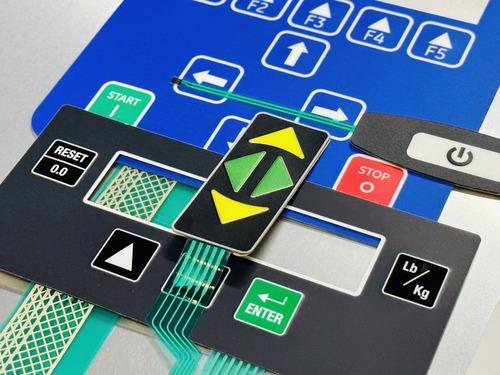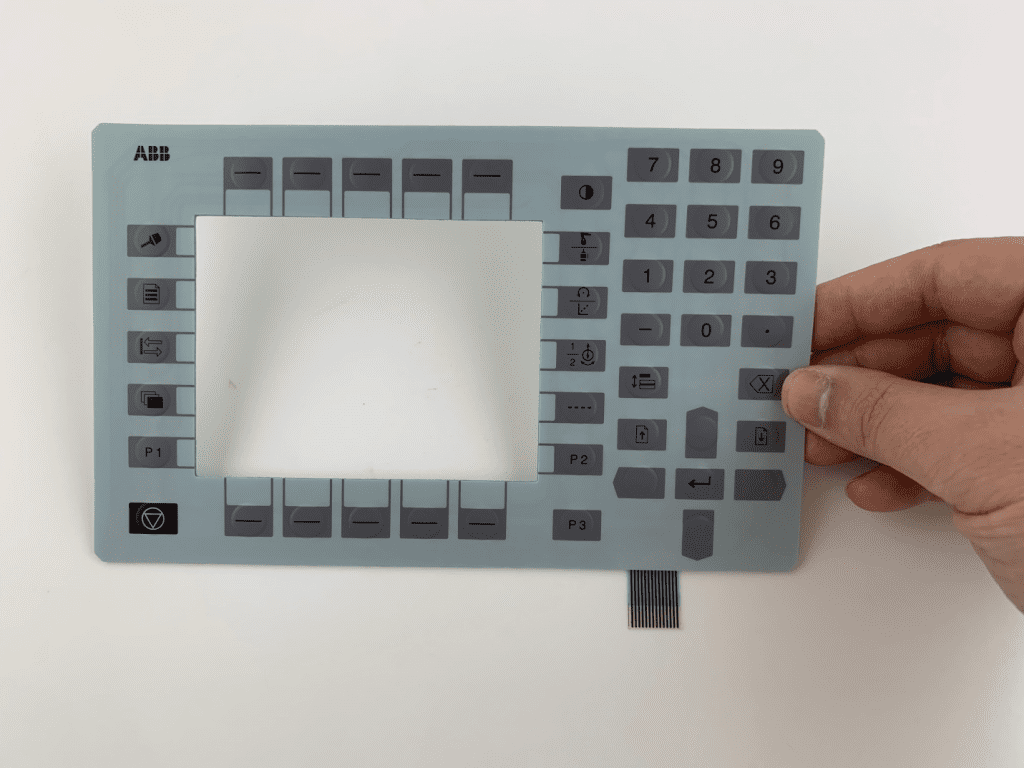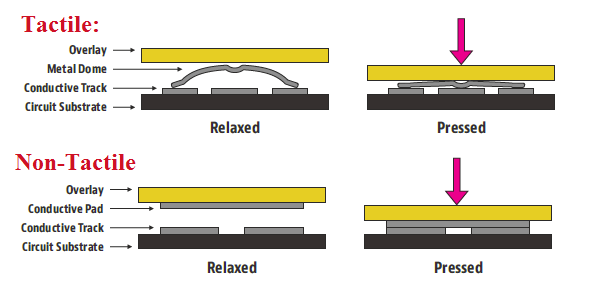Membrane Switches: A Cost-Effective Solution for Product Interfaces
Membrane Switches: A Cost-Effective Solution for Product Interfaces
Blog Article
Understanding the Relevance of Membrane Switches in Interface
Membrane switches are essential components in the layout of effective customer interfaces, promoting not only performance but additionally boosting aesthetic appeal and customer communication. As we check out the future trends and different advantages associated with Membrane technology, it becomes clear that these buttons are a lot more than just elements; they represent a convergence of innovation and functionality.
What Are Membrane Switches?

The spacer layer, which contains glue buildings, enables the separation of the circuit layer from the overlay, guaranteeing that the switch continues to be in a non-activated state up until pressed. When stress is put on the overlay, it compresses the spacer layer, connecting the space and completing the circuit in the underlying layer. This layout not just minimizes the physical space required for typical mechanical switches yet also enhances the toughness of the device, as Membrane switches are normally immune to dirt, dampness, and various other ecological aspects.
Generally found in applications ranging from consumer electronics to clinical devices, Membrane buttons are essential to modern innovation, giving a straightforward and effective user interface that lines up with contemporary layout demands.
Benefits of Membrane Switches
While various button modern technologies exist, Membrane Switches offer distinctive benefits that make them particularly preferable in different applications. Among the main advantages of Membrane buttons is their compact design, which allows for space-saving implementations in gadgets where genuine estate is limited. Their slim account not only enhances aesthetic allure yet likewise facilitates light-weight building and construction.
Another substantial advantage is their resistance to environmental elements. Membrane switches are generally secured versus moisture, dust, and contaminants, making them excellent for use popular environments, such as medical gadgets and commercial tools. This durability extends the lifespan of the switch, lowering upkeep prices and boosting dependability.
Moreover, Membrane switches can be personalized to fulfill specific layout requirements, including one-of-a-kind graphics and colors that improve individual interaction. Their tactile responses alternatives can additionally be tailored to supply a satisfying user experience. Additionally, Membrane buttons are affordable, specifically in high-volume applications, as they can be produced successfully.
Applications in Various Industries

In the consumer electronics market, Membrane switches prevail in gadgets such as microwaves, cleaning equipments, and remote controls. Their responsive responses and visual alternatives enhance user experience while providing a sleek, modern-day look. In addition, vehicle producers make use of Membrane switches in control panel controls and infotainment systems, where area is restricted, and customer interaction is crucial.
In addition, the industrial field leverages Membrane buttons in control panels for machinery and tools, permitting intuitive operation in usually rough environments. Their resistance to chemicals and wetness ensures durability and dependability in these applications. Overall, the flexibility of Membrane Switches contributes substantially to their prevalent use, making them essential in different technological domains.
Style Factors To Consider for Membrane Buttons

When developing Membrane switches, a number of key factors to consider have to be taken into consideration to make certain optimal functionality and user experience. The option of products is vital; choosing resilient, top notch substratums can boost the switch's longevity and resistance to ecological variables such as wetness and temperature fluctuations.
Secondly, the style of the graphic overlay ought to prioritize quality and convenience of use. Symbols and text need to be legible, and the layout must facilitate intuitive interaction (membrane switches). Additionally, responsive responses is important; integrating a tactile dome or other devices can enhance the user experience by providing physical verification her response of activation
Another vital factor is the switch's electrical efficiency. Designers have to ensure that the conductive traces are correctly developed to lessen resistance and avoid signal interference. This entails assessing the called for actuation force and read the article making certain compatibility with the electronic parts they will interface with.

Future Trends in Membrane Innovation
As technology proceeds to breakthrough, Membrane buttons are positioned to develop dramatically, driven by innovations in products and manufacturing strategies. One arising trend is the consolidation of advanced materials, such as adaptable substratums and conductive inks, which boost durability and lower the overall weight of Membrane switches. These products not only boost the responsive action yet likewise permit the design of switches that can stand up to harsher ecological problems.
In addition, the combination of touch-sensitive innovations is changing traditional Membrane Switches right into more interactive individual interfaces. Capacitive touch sensors embedded within Membrane switch panels can offer a much more user-friendly and responsive customer experience, aligning with the growing demand for smooth, modern-day styles in customer electronic devices.
In addition, developments in printing techniques, such as digital and 3D printing, make it possible for fast prototyping and customization of Membrane buttons. This adaptability enables manufacturers to react extra quickly Click Here to market needs and consumer choices.
Finally, sustainability is coming to be a considerable focus, with producers discovering green materials and processes. As these trends unfold, the future of Membrane modern technology guarantees enhanced performance, visual appeal, and ecological duty, solidifying their function in sophisticated customer interfaces across various markets.
Final Thought
In verdict, Membrane Switches stand for a vital element in the layout of user interfaces, incorporating capability with visual flexibility. As advancements in innovation continue, the development of Membrane buttons is anticipated to more refine customer interfaces, driving development and boosting use in a progressively intricate technological landscape.
Membrane switches are indispensable parts in the design of efficient user interfaces, facilitating not just performance however additionally boosting aesthetic allure and customer communication.Membrane Switches serve as a crucial component in numerous user interfaces, facilitating a seamless interaction between individuals and electronic tools.While various switch innovations exist, Membrane Switches offer unique advantages that make them especially desirable in various applications.In addition, Membrane switches can be customized to satisfy details design needs, incorporating distinct graphics and shades that improve individual interaction.In conclusion, Membrane Switches represent an important component in the layout of customer interfaces, combining functionality with visual adaptability.
Report this page